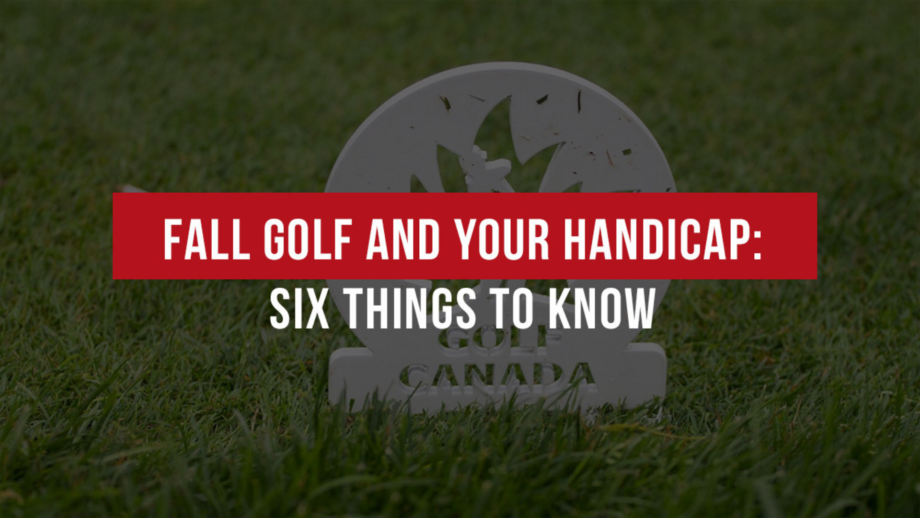As the leaves turn and temperatures drop across the country, fall is one of the most scenic — and often favourite — times of year to be on the golf course. It also signals the approach of the end of the active season, which varies by province.
Before you pack up your clubs for winter, it’s important to know how fall golf can affect your Handicap Index under the World Handicap System (WHS).
Here are six things to keep in mind:
1. Active seasons vary by Province
The Active Season is the period when scores from your specified area are eligible for handicap purposes. These dates are based on when courses are typically in mid-season condition, as they were when rated.
Weather and course conditions can affect the accuracy of course ratings, which is why scores eventually become ineligible for handicap purposes. Even if the active season is over, you can still post your scores to your Golf Canada account, though they won’t be factored into your Handicap Index.
2. Playing Conditions Calculation (PCC)
Frost delays, soggy lies and swirling winds are all part of fall golf. Conditions can be unpredictable, but the Playing Conditions Calculation (PCC) helps account for tougher days.
PCC is an automatic process that compares daily scores against expected scoring patterns. If enough players post scores outside expectations from the same course on the same day, the WHS adjusts score differentials to reflect difficulty. The PCC only activates if at least eight rounds are posted from the same tee/course, so post your score the same day.
3. Preferred lies and wet fairways
When the ground gets damp, many clubs implement preferred lies (lift, clean and place) to ensure fair play. These rounds are still acceptable for handicap purposes under the WHS, as long as the local rule is in place and the round follows the Rules of Golf. When in doubt, check with the pro shop.
4. Shorter days means more 9-Hole and incomplete rounds
With less daylight in the fall, fitting in 18 holes can be a challenge. The WHS supports posting 9-hole rounds and incomplete rounds (10–17 holes).
As long as you play a full front or back nine, your score can be posted. You’ll receive a score differential for the holes played and the system will combine them to produce an 18-hole differential. Twilight nines are still a great way to keep scores in your record.
5. Playing on aerated greens
Many Canadian courses aerate their greens in the fall. While bumps and sand may affect putting, these scores are still valid.
Rounds played on aerated greens are acceptable, and a PCC adjustment may apply. It’s important to post these scores, even if conditions feel less than ideal.
6. Keep posting your scores
Fall golf in Canada can be both stunning and challenging. While the season may be short, those final rounds still matter in maintaining a fair and accurate Handicap Index.
Whether you’re playing competitively or just enjoying the last stretch of good weather, remember the WHS is designed to account for seasonal conditions.
So don’t put your clubs away just yet — post your scores, enjoy the colours and finish your season strong.



